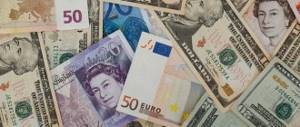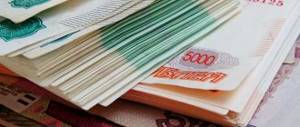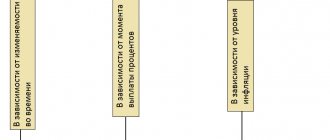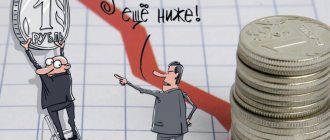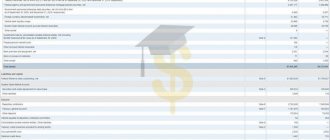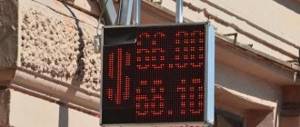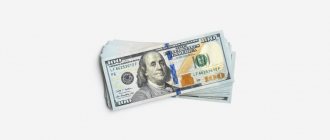Cooperation with foreign enterprises and carrying out export-import operations requires constant attention to changes in exchange rates. This is especially true for import processing, since when ordering foreign products, payment is most often made in the monetary units of the country from which the delivery is made.
However, you should not think that the exchange rates of the Central Bank of the Russian Federation are of interest only to participants in foreign trade, employees of logistics companies and stock brokers. There are situations in the life of any person when it is necessary to find out the official exchange rate for today.
Let's consider the most common everyday situations when you need to find out the ratio of the currency of another state to the ruble:
- buying a car abroad from the manufacturer;
- going on vacation and needing to exchange money for local currency;
- ordering goods on a foreign website where prices in rubles are not indicated;
- investing savings in foreign currency.
On our website you can familiarize yourself with the exchange rates of the main international currencies, as well as the CIS and Baltic countries with which the Russian Federation maintains trade relations.
Current currency exchange rates for today
There are many ways to find out the exchange rate. This information can be obtained from banks, exchange offices and financial institutions. But the most convenient option today is to simply go online and find out everything you need.
Unfortunately, not all resources are updated and provide reliable information, so when choosing a site you should give preference to large resources with a positive reputation that you can really trust.
On the site you can get information about exchange rates online and not worry about its reliability. The data provided is verified and updated daily in accordance with current changes in exchange rates.
Currency value: what does it depend on?
In ancient times, when the concept of a national currency did not yet exist, but commodity exchange already existed, the first money began to emerge; it was made of gold and silver and had real value and weight. But over time, it became too expensive to use precious metals, and paper money was invented. Their release is strictly limited by the real gold and foreign exchange reserves, and they cannot be printed to your heart’s content.
Zlatnik is the first ancient Russian gold coin, minted in Kyiv at the end of the 10th - beginning of the 11th century, shortly after the Baptism of Rus' by Prince Vladimir.
Depending on the development of the country and its economy, the size of the gold and foreign exchange reserve, economic relations between countries, world trade turnover, the investment attractiveness of the country, the goods it sells and buys, the value of the national currency is formed.
Countries with developed economies have the most valuable currencies . This is due to the stability and reliability of the country's economic well-being. Moreover, it does not matter at all whether the country is large or very small, for example, Switzerland, but due to its status and reliability, the currency of this country is one of the most expensive in the world. It is not for nothing that many people choose Swiss banks to save their savings. Even Swiss watches have the status of the most accurate, reliable and durable. And this once again emphasizes the level of development of the state.
Let's return to the ruble, and what do we see? In fact, Russia is the largest state in the world, but its currency is completely dependent on the same dollar, although it is not considered the most reliable, and in recent years has not even been included in the top five currencies in the world, although it is a reserve currency. The value of the ruble directly depends on the export of oil and gas, and since recent years have become very difficult for the country due to the introduction of a huge number of sanctions, one should not be surprised at the level of the ruble.
Other services for currency transactions from Alta-Soft
The functionality of our resource is not limited to the table of exchange rates for today. Here you can also use a currency calculator and recalculate a specific amount of funds in other monetary units. The translation result is calculated accurate to the fourth decimal place.
You can also see the dynamics of growth and decline in the value of currencies by going to the section “Charts of currency exchange rates”. Using these indicators, you can choose the right time to transfer funds or enter into sales transactions with a foreign supplier.
Table of world currencies (option 2)
The reference table contains data on the currencies of most countries in the world and a breakdown of countries by continent.
| Countries of the world | National currency |
Currencies of North and Central America | |
| Antigua and Barbuda | East Caribbean dollar |
| Bahamas | Bahamian dollar |
| Haiti | Gourde |
| Guatemala | Quetzal |
| Honduras | Lempira |
| Grenada | East Caribbean dollar |
| Dominica | East Caribbean dollar |
| Dominican Republic | Dominican Peso |
| Canada | Canadian dollar |
| Costa Rica | Colon |
| Cuba | Cuban Peso |
| Mexico | Mexican Peso |
| Nicaragua | Golden Cordoba |
| Puerto Rico | U.S. dollar |
| Salvador | Colon |
| USA | U.S. dollar |
| Trinidad and Tobago | Trinidad and Tobago dollar |
| Jamaica | Jamaican dollar |
Currency of South American countries | |
| Argentina | Pesos |
| Bolivia | Boliviano |
| Brazil | Real |
| Venezuela | Bolivar |
| Colombia | Colombian Peso |
| Paraguay | Guarani |
| Peru | New salt |
| Suriname | Surinamese dollar |
| Uruguay | Uruguayan Peso |
| Chile | Chiy Peso |
| Ecuador | Sucre |
Currencies of European countries | |
| Austria | Euro |
| Albania | Lek |
| Andorra | Euro |
| Belarus | Belarusian ruble |
| Belgium | Euro |
| Bulgaria | a lion |
| Great Britain | GBP |
| Hungary | Forint |
| Germany | Euro |
| Greece | Euro |
| Denmark | Danish krone |
| Ireland | Euro |
| Iceland | Icelandic krona |
| Spain | Euro |
| Italy | Euro |
| Latvia | Lat |
| Lithuania | Lit |
| Luxembourg | Euro |
| Malta | Euro |
| Monaco | Euro |
| Netherlands | Euro |
| Norway | Norwegian krone |
| Poland | Zloty |
| Portugal | Euro |
| Russia | Ruble |
| Romania | Lei |
| San Marino | Euro |
| Slovakia | Euro |
| Ukraine | Hryvnia |
| Finland | Euro |
| France | Euro |
| Czech | Czech crown |
| Switzerland | Swiss frank |
| Sweden | Swedish krona |
| Estonia | Euro |
Asian currencies | |
| Afghanistan | Afghani |
| Bangladesh | Taka |
| Bahrain | Bahraini Dinar |
| Brunei | Brunei dollar |
| Vietnam | Dong |
| Israel | Shekel |
| India | Indian Rupee |
| Indonesia | Indonesian rupiah |
| Jordan | Jordanian dinar |
| Iraq | Iraqi Dinar |
| Iran | Iranian rial |
| Yemen | Yimen rial |
| Cambodia | Riel |
| Cyprus | Euro |
| China | Yuan |
| Democratic People's Republic of Korea | Won |
| The Republic of Korea | Won |
| Kuwait | Kuwaiti dinar |
| Laos | Kip |
| Lebanon | Lebanese pound |
| Malaysia | Malaysian riggit |
| Maldives | Maldivian Rufiyaa |
| Mongolia | Tugrik |
| Nepal | Nepalese rupee |
| Oman | Omani real |
| Pakistan | Pakistani rupee |
| Saudi Arabia | Saudi Riyal |
| Singapore | Singapore dollar |
| Syria | Syrian pound |
| Thailand | Baht |
| Türkiye | Turkish lira |
| Philippines | Pesos |
| Sri Lanka | Sri Lankan rupee |
| Japan | Yen |
African currencies | |
| Algeria | Algerian dinar |
| Angola | Kwanzaa |
| Benin | Franc |
| Botswana | Pula |
| Burkina Faso | Franc |
| Burundi | Burudvian franc |
| Gambia | Dalasi |
| Ghana | Cedi |
| Guinea | Guinean franc |
| Guinea-Bissau | Guinea-Bissau peso, franc |
| Democratic Republic of the Congo | Zaire |
| Djibouti | Djiboutian franc |
| Egypt | Egyptian franc |
| Zambia | Kwacha |
| Zimbabwe | Zimbabwean dollar |
| Cameroon | Franc |
| Kenya | Kenyan shilling |
| Congo | Franc |
| Ivory Coast | Franc |
| Lesotho | Loti |
| Liberia | Liberian dollar |
| Libya | Libyan dinar |
| Mauritius | Mauritian rupee |
| Mauritania | Mauritanian ouguiya |
| Madagascar | Malagayan franc |
| Malawi | Kwacha |
| Mali | Franc |
| Morocco | Dirham |
| Mazambique | Metical |
| Nambia | Namibian dollar |
| Republic of Nigeria | Franc |
| Nigeria | Naira |
| Rwanda | Rwandan franc |
| Swaziland | Lilangeni |
| Seychelles | Seychelles rupee |
| Senegal | Franc |
| Somalia | Somali shilling |
| Sudan | Sudanese pound |
| Sierra Leone | Leone |
| Tanzania | Tanzai shilling |
| Tunisia | Tunisian dinar |
| Uganda | Ugadi shilling |
| Central African Republic | Franc |
| Chad | Franc |
| Equatorial Guinea | Franc |
| Ethiopia | Byrr |
| South Africa | South African rand |
Hard currency as a means of diversification
On the holiday weekend in March 2021, Russian media again, as in December 2014, reported that queues formed near currency exchange offices. Some citizens repeated the previous mistake and started thinking about protecting their savings only after the ruble exchange rate fell.
A number of experts recommend storing the airbag in the currency in which the person plans to spend it. But experience suggests that it is advisable to divide savings into at least three currencies. Low interest rates on deposits in dollars and euros have reduced the attractiveness of these instruments. However, those who do not have a brokerage account or at the same time care about a cash cushion should not neglect bank deposits.
Currency diversification is the basis for building a reliable portfolio. The currency crises that Russia has gone through teach investors not to focus on the market of their country. Adding hard currency positions is an effective way to minimize risk and generate additional profitability.
Investors who, for some reason, are not ready to enter the St. Petersburg Stock Exchange or invest money directly in shares of foreign companies can use any combination of the following instruments:
- Corporate Eurobonds of reliable issuers;
- Eurobonds of the Ministry of Finance, denominated in foreign currency;
- Units of ETFs and mutual funds tracking the S&P 500, the index of the most liquid Eurobonds, etc.;
- Purchasing lots of dollars, euros and other hard currency units on the currency section of the Moscow Exchange.
I also recommend reading:
How to provide financial education for children
How to raise a financially successful person: top 5 tips for parents
The last option, although it saves on spreads, is, in my opinion, the least preferable from an investment point of view. During periods of stable ruble exchange rate or its strengthening, such an investment will not bring profit. And attempts to catch the “bottom” of quotes for buying and the “high” for selling may turn out to be unprofitable. The desire to purchase currencies after a sharp jump can also lead to financial losses. Those who invested in dollars and euros at their peak in 2014 or early 2021 are still in the red.
BPIF and ETF units are more attractive in terms of profitability. Their value grows not only when the ruble falls, but also due to their underlying assets and the reinvestment of dividend and coupon payments from issuers. In addition, these instruments employ a currency hedging mechanism. Below is a comparison of the dynamics of the dollar exchange rate and quotes of the SBCB mutual fund from Sberbank, which repeats the index of the most liquid Eurobonds of the Moscow Exchange.
When choosing equity funds, an investor must remember that sharp fluctuations in oil prices negatively affect not only the ruble, but also the global stock market. This also applies to countries with hard currencies, whose economies are not linked to energy income. For example, on March 9, 2021, when “black gold” fell in price by a third, the S&P 500 lost 7.5%. Oil producing companies led the decline. At the same time, the currencies of these countries do not sink, but become a protective refuge for investors.
I believe that Eurobonds or Eurobond ETFs (we are talking about short bonds) are one of the most stable investment instruments that can minimize portfolio drawdown during a crisis. Securities indirectly related to the dollar can also support the overall indicators. For example, trading on March 10, 2021 demonstrated that in the event of a sharp fall in the ruble exchange rate, quotes for preferred shares of Surgutneftegaz behave better than the market. They grew by 11.4% during the day. This outperforms gold miners and other traditionally defensive assets. The reason is that the company has huge reserves of currency cache, exceeding the capitalization of the issuer.
I also recommend reading:
Finding out how to make money during quarantine
How to make money in quarantine: TOP 10 ways
Experienced investors often use hedging instruments available in the derivatives market: dollar currency futures and other hard currency-related instruments. However, I do not recommend adding them to your positions without proper preparation.
Money of Foggy Albion
The British pound is consistently among the leaders in value on the planet. By the way, the colonies of the Kingdom also issue their own banknotes, which are quoted in a 1:1 ratio to British money, although they have a different appearance. However, the native English are extremely reluctant to accept “other” pounds as payment for goods and services.
The situation with the ruble
You may be interested in: How to get a Mnogo.ru card: step-by-step instructions, documents and reviews
The Russian currency is far from the best option for emulating other money. And that’s all, because if you analyze the trend from the period of the creation of the ruble to its current state, it will become clear: the currency almost constantly shows negative indicators, declining in relation to other money. Literally over the last 20 years, the “wooden” (this is the popular name for the Russian ruble) has fallen in price relative to the American dollar by almost 14 times.
